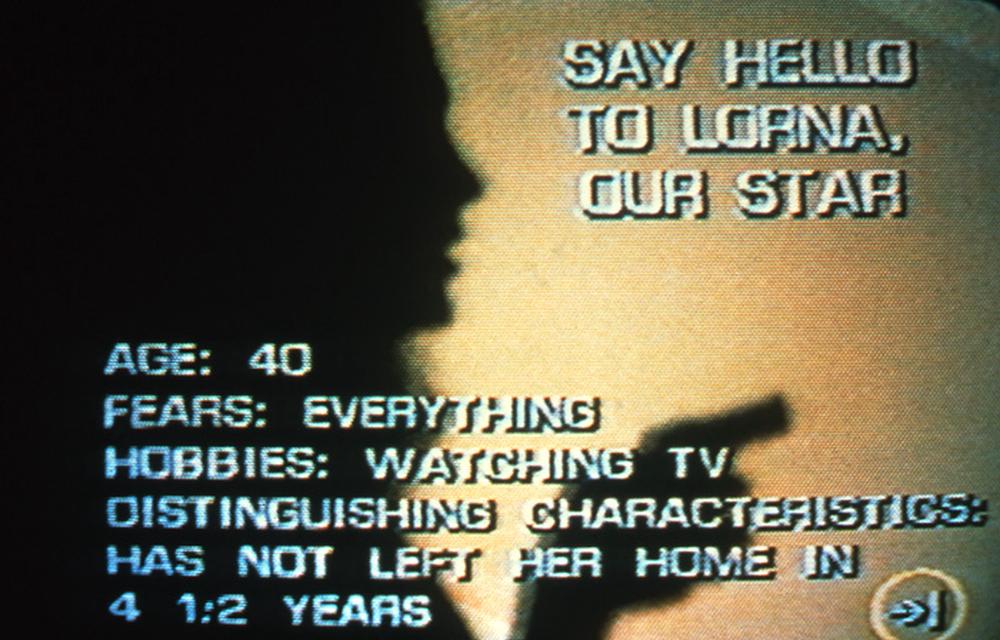Lynn Hershman Leeson. Remote Control

In 1984 Lynn Hershman Leeson completed the first piece of video art to use laserdisc technology. LORNA is an interactive video installation that enables users to lead the life of an agoraphobic avatar named Lorna. On screen, the protagonist’s tiny apartment is furnished with clothing, magazines, a television, a mirror, and a fishbowl. Each object is clickable with the remote control that allows the viewer to explore and intervene. Accessing videos and soundtracks about Lorna’s fears and dreams, her history and future possibilities, the chapters of her life are sequenced by the viewer, changing in meaning and possible outcome. The viewer exercises determination over Lorna’s fate, which has three possible endings: Lorna may shoot her television set, commit suicide, or move to Los Angeles.1 Informed by Hershman Leeson’s interactive performance works, LORNA broke the passive experience of consuming television. “Lorna’s passivity—presumably caused by her being controlled by media—is a counterpoint to the direct action of the player,” the artist explained.2 As the viewer comes to understand their control, LORNA is an empowering experience of transgressing mass-media control.
Lynn Hershman Leeson, “Private I: An Investigator’s Timeline,” in The Art and Films of Lynn Hershman Leeson: Secret Agents, Private I, ed. Meredith Tromble (Berkeley: University of California Press, 2005), 77. ↩︎
Lynn Hershman Leeson, “Private I: An Investigator’s Timeline,” in The Art and Films of Lynn Hershman Leeson: Secret Agents, Private I, ed. Meredith Tromble (Berkeley: University of California Press, 2005), 78. ↩︎